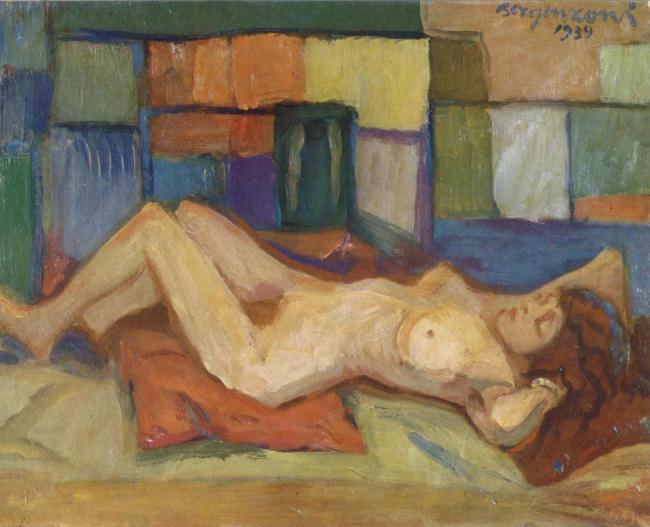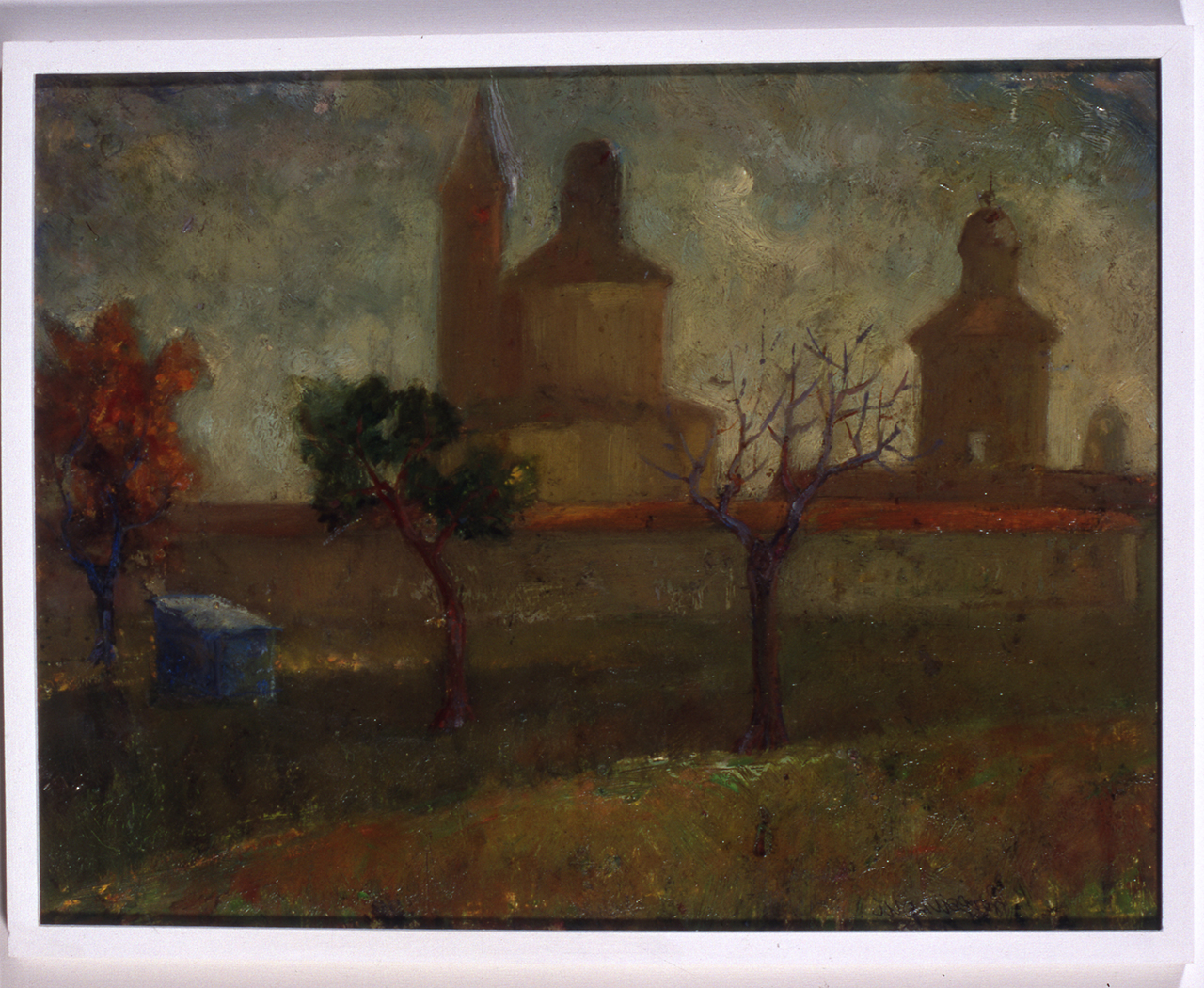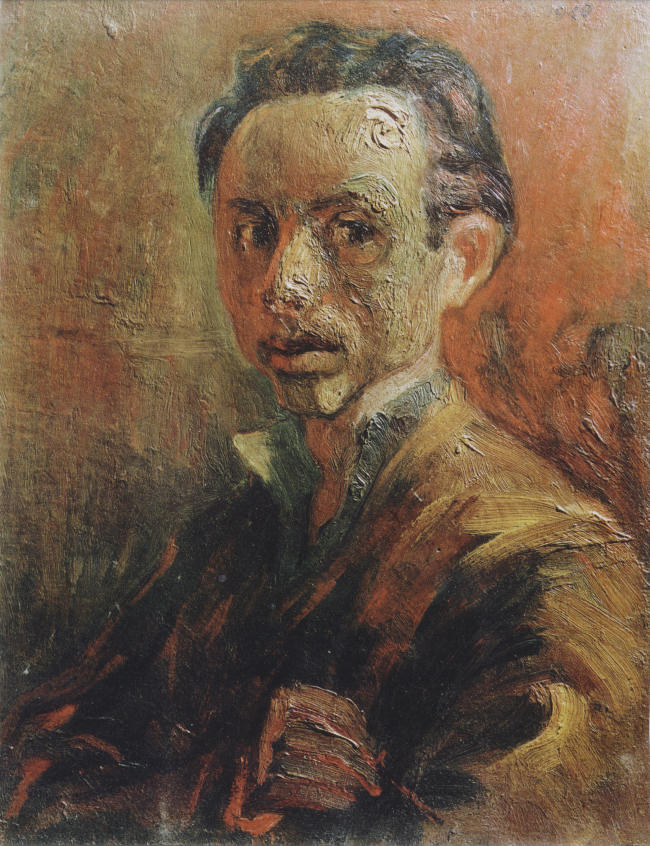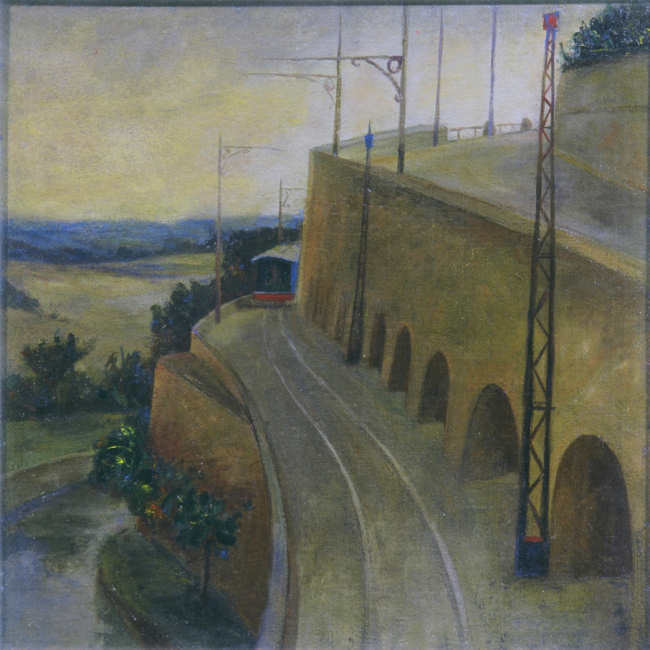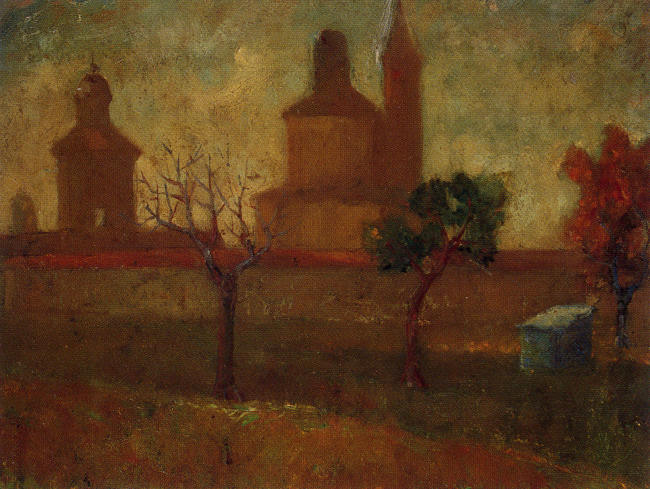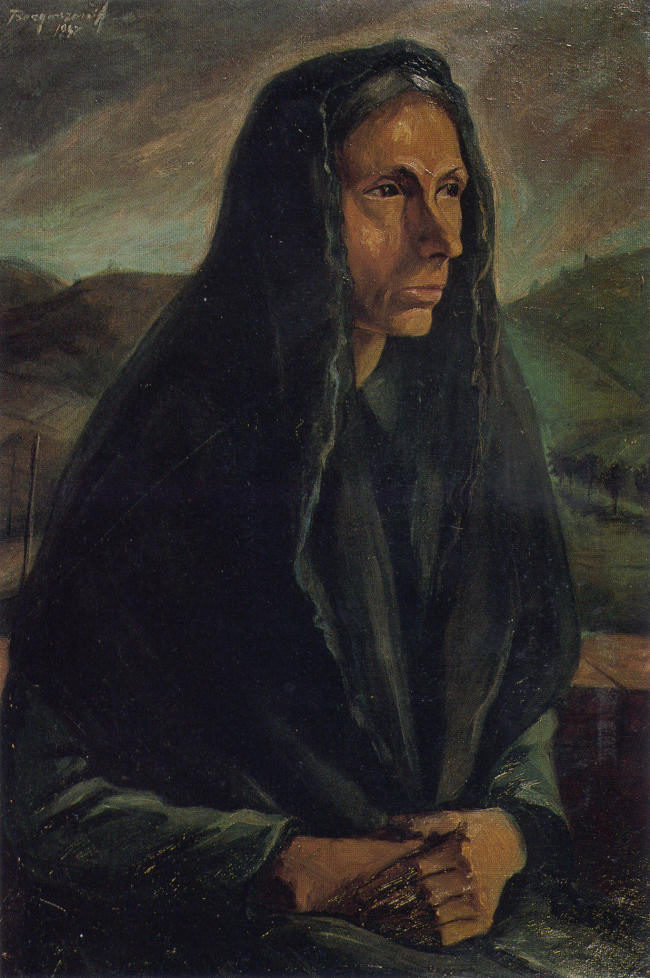Anni '30 e '40
“Io dipingo per un richiamo lontano nel tempo. Tanto lontano che a volte penso sia sorto prima di me e mi sia balzato incontro quando ancora ero nel mondo dell’incosciente.
Allorchè compio questo atto antico, odo un grido interiore come di persona smarrita e presa dallo spavento, e diviene allora spontaneo e affannoso il ricercarmi disperatamente in me stesso per uscirne finalmente sgravato da un grande peso.
Ho incominciato a essere pittore fin dalla prima età, quando mia madre, una “zolfanaia” col cuore di santa e le mani ruvide ma così carezzevoli e generose, mi teneva presso di lei in una soffitta affinchè non frequentassi i monelli […] ed in quella soffitta trascorsi tutta la mia infanzia e ricordo vivamente come rimanessi lunghi tratti ad osservare, preso da un misterioso stupore, l’ambiente attraversato stranamente da vecchi e grossi travi da cui penzolavano in bizzarre contorsioni centinaia di funi e brandelli di vecchie stoffe simili a liane in una foresta senza cielo […] ancor oggi le mie figure contorte spezzate sconvolte sono un’involontaria evocazione di quel tempo, somigliano agli infiniti fantasmi che si accendevano nella mia fantasia vergine, quando nella soffitta entrava un raggio di luce e cadeva su un brandello di stoffa macchiato di vari colori, che una ventata animava.”
(Aldo Borgonzoni, Bologna, 10 aprile 1946 in Borgonzoni, a cura di Lamberto Priori, cat. mostra a Bologna, Galleria Cronache, 1946)
Artista vocato alla narrazione figurativa tratta dalla realtà, anche con valenze simboliche e antropologiche, Aldo Borgonzoni è l’interprete di una poetica drammatica tesa al racconto esteriore ed interiore della vita umana e che trova nell’Espressionismo europeo, in particolare tedesco e italiano, la migliore affinità stilistica del suo segno, mentre la tavolozza cromatica volta alla comunicazione delle perturbazioni emotive s’ispira, più o meno consapevolmente, al francese Fauvisme. Alla fine degli anni Trenta del Novecento egli compì un viaggio di studio a Monaco e Norimberga che lasciò in lui un’impronta espressionista indelebile in tutta la sua futura carriera di pittore, anche se, appena arrivato a Bologna, le opere del toscano Lorenzo Viani avevano colpito la sua sensibilità artistica.
“Il 1930 rappresenta una data molto importante per me perché appunto lascio Medicina. Avevo già compiuto alcune esperienze di carattere artigianale, ero stato fattorino, prima da un falegname poi da un intagliatore. Poi l’ultimo anno ero stato compositore tipografo. Ma tutto questo mi lasciava con un’insofferenza, perché cullavo dentro di me….avevo una grande ansia di diventare un pittore.
Appena arrivato a Bologna non ho potuto fare immediatamente il pittore, quindi ho dovuto trovarmi una professione per ricavare quel minimo indispensabile per venire incontro ai sacrifici di mia mamma. E infatti dal ’30 al ’40, io andai da Enea Stefani orafo e cesellatore. Quello fu in un certo senso il mio maestro. In via san Felice. Quindi che cosa ha significato poi quell’esperienza? Un’esperienza di carattere artigianale dove le tecniche del passato, che confluivano dal rinascimento al ‘600-‘700 e al neoclassico, mi davano la possibilità di ristrutturami con una grande capacità del mestiere, di apprendistato di tutte quelle tecniche poi che avevano formato, si può dire, i pittori del rinascimento che provenivano dalle botteghe degli orafi. Quindi in quel senso mi sono formato. Però devo anche dire che mi iscrissi nel 1930 all’Istituto d’Arte di via Cartolerie e di sera ho frequentato fino al 1930 e sono uscito maestro d’arte. Quindi la mia esperienza primaria dal ‘30 inizia anche in maniera faticosa. Io arrivo bambino a Bologna e i primi incontri sono con pittori come Guido Bugli o la Norma Mascellani. Però gli strumenti di informazione, diciamolo pure, erano le mostre. E le mostre di quel periodo sono le mostre sindacali e intersindacali promosse dal Sindacato Fascista delle Belle Arti che era una grande organizzazione capillare della cultura delle arti figurative. Poi c’’erano, diciamo così, dei centri di cultura che erano la Galleria d’Arte Moderna, che allora era a Villa delle Rose, diretta da Zucchini. E lì c’era un panorama di tutta la cultura ottocentesca. Che poi quella cultura era la base di una cultura d’ambiente. Cioè la città di Bologna rifletteva nel suo complesso i modi, le tecniche le poetiche di tutta una cultura d’ambiente che da Coriolano Vighi a Luigi Bertelli, al figlio di Luigi Bertelli, Flavio, fino ad arrivare alla cultura più ufficiale e contemporanea del mio tempo, dal ’30 al ’40 che rifletteva grossomodo i modi dell’ottocento. Però alla Galleria d’Arte Moderna di Villa delle Rose mi colpì immediatamente un grande personaggio per me, anche se non se ne parlava in quel periodo. C’erano i cartoni con carattere espressionista di Lorenzo Viani sui bambini che studiavano sui banchi della scuola. Erano bambini convulsi, dinamici, irrequieti, che davano palesemente un’aria di contestazione a tutta quella cultura di cui ho parlato prima. Di quella cultura che aveva caratteri accademici, che aveva caratteri pittorici di rilievo ed anche di qualità, però entravano in un ordine della normalità del linguaggio. Lorenzo Viani dava colpi…. dava delle bordate…era un terremoto in poche parole. E’ la mia prima impressione di pittore giovane che arriva a Bologna: Lorenzo Viani.”
(INTERVISTA DI RESCA AD ALDO BORGONZONI per RADIO BOLOGNA s.d., Courtesy Archivio e Centro Studi Aldo Borgonzoni)
“Alla galleria di Villa delle Rose andavo molto volentieri, vi avevo scoperto della buona pittura che m’indusse a riflettere e fare delle scelte. In particolare un gruppo di cartoni dipinti da Lorenzo Viani, riproducesti bambini che studiavano, mi colpì profondamente. Erano bambini convulsi, irrequieti, di forte marca espressionista, che dovevano turbare palesemente, con la loro carica espressiva e deformante, tutta la cultura tranquilla e benpensante del nostro ambiente. L’opera di Lorenzo Viani era come un terremoto, e restò per me un riferimento saldo e preciso.”
(A. Borgonzoni, Dagli spazi rurali della bassa (di Medicina) a quelli urbani (Bologna), in Bologna anni 1930-40, in “Atti e Memorie della Accademia Clementina di Bologna”, a XVI, Bologna, 1983, p. 42)


